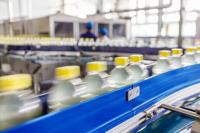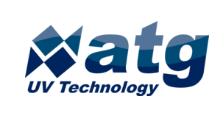 Add My Company
Add My Company
Sign In

The continued growth in the market for mineral waters, bottled waters and flavoured waters is good news for the food and beverage sector. To ensure that products have a long shelf life, disinfection of both water and flavour concentrates is critical, and traditional water disinfection processes have used oxidising biocides like sodium hypochlorite, chlorine dioxide or ozone. Chlorine based chemicals can produce a range of potentially carcinogenic by-products including trihalomethanes (THMs), haloacetic acids (HAAs) and nitrosodimethylamine (NDMA), whilst ozone can generate bromates from bromide in the raw water. All of these by-products will pass through reverse osmosis membranes into the product water. With consumers becoming more discerning, and wanting the products they buy to be free from chemicals and as natural as possible, ultraviolet (UV) irradiation has become the technology of choice for liquid disinfection in the food and beverage sector. Unlike chemical disinfectants, UV treatment does not introduce any residual agents or by-products into the liquid nor does it change the chemical or organoleptic properties of a product.
UV disinfection uses electromagnetic waves in the UV-C band – a natural component of sunlight – to inactivate bacteria and a variety of other microbes. It is a broad spectrum technique that inactivates a wide range of micro-organisms and is entirely chemical-free with no health and safety or environmental issues. All it needs is an electricity supply. However, in order to get the best out your UV system, it has to be properly designed and that means providing the UV supplier with five key items of information to be able not only to select the right size of reactor but also to consider what other features will need to be included.
The first thing to define is the flow rate of the liquid to be treated. That means not only the maximum, average and minimum flows but also the pattern of use. For example if the normal average flow is 5m3/h for 6 hours per shift but the maximum is 10m3/h for 2 hours it may be better to use two 5m3/h units with one normally off line and just brought into service for the maximum flow.
Secondly is whether the flow is continuous or intermittent. If it stops, it may be necessary to switch the reactor off, but then, when it restarts it will need a warm-up time before it can guarantee to deliver the full germicidal dose and this may necessitate a run to waste or a recycle line.
Third is the liquid characteristics – most UV systems are used to disinfect water, but UV is also effective for the syrups, juices, flavourings and concentrates that are key ingredients in flavoured waters, soft drinks and fruit juices. For disinfection to occur the radiation has to pass through the liquid and the critical parameter here is the UV transmittance (UVT) measured in percentage. A UVT of 80% means that 20% of the UV lamp intensity will be lost in a 1cm path through the liquid. Due to the high viscosities encountered in sugar solutions up to 66°Bx, UVT can be as low as 10-15%. For these applications, a specialist UV chamber, using a ‘thin-film’ design ensures the syrup is evenly exposed to the UV radiation. UV systems are usually installed in-line after the storage tank discharge point so that the syrup is treated prior to dilution into the product and prior to the addition of additives, flavourings or colourings, all of which reduce UV transmission.
Fourth is the UV dose (or fluence). Inactivation of most bacteria requires a relatively low dose whilst protozoans, moulds and yeasts need higher doses but, typically, a single pass through a UV system generating a dose of 40mJ/cm2 will achieve a 4 log to 5 log (99.99% to 99.999%) reduction of most microorganisms.
Fifth is the hydraulic design of the reaction chamber which should ensure that all the water is exposed to equal intensity of radiation with no short circuiting. This should always be validated by a third party to a recognised test protocol, such as that set out in the US EPA 2006 Ultraviolet Disinfection Guidance Manual, and reputable suppliers will have validation certificates for their products.
Collating all this information before talking to your UV supplier will pay dividends in ensuring that the UV system meets all the requirements and provides years of trouble-free operation. Talk to our team of UV experts today.
For more information on DIANE WHITE OF ATG UV TECHNOLOGY GIVES TOP TIPS ON SPECIFYING UV SYSTEMS talk to atg UV Technology
Enquire Now
List your company on FindTheNeedle.

